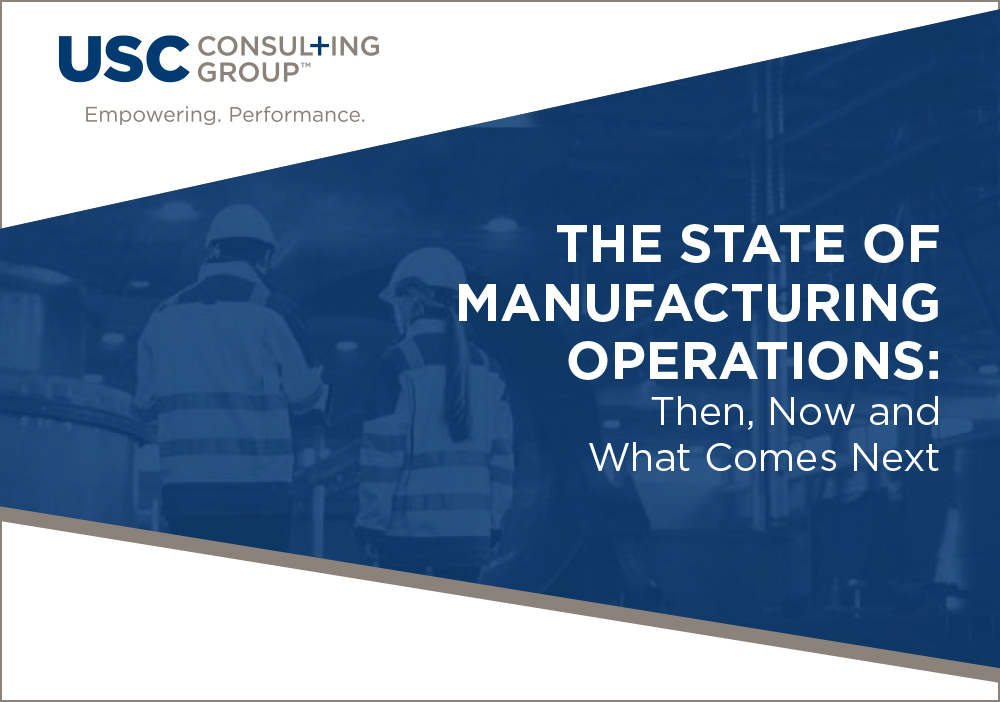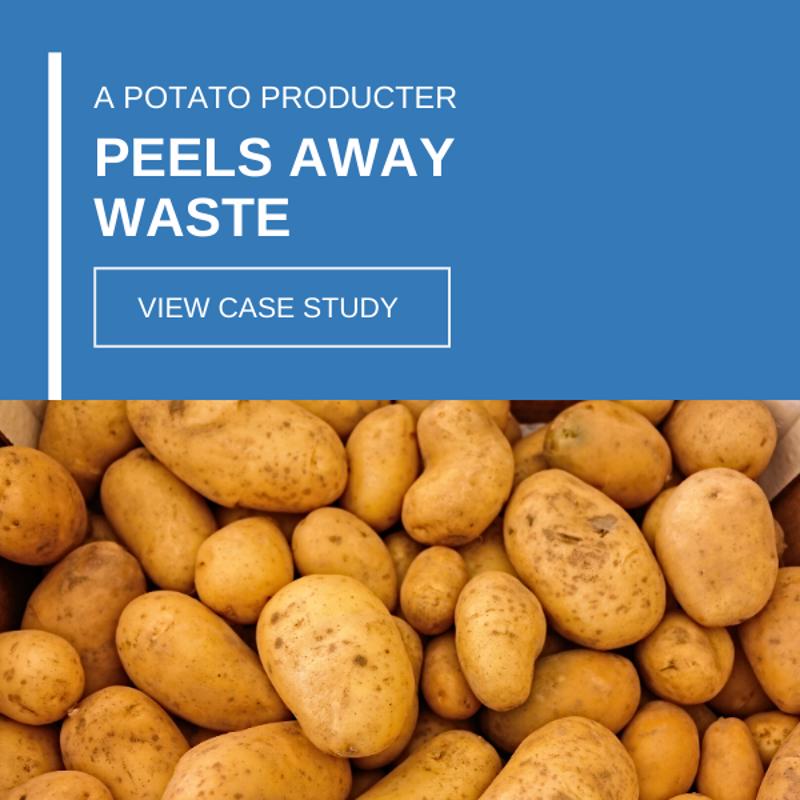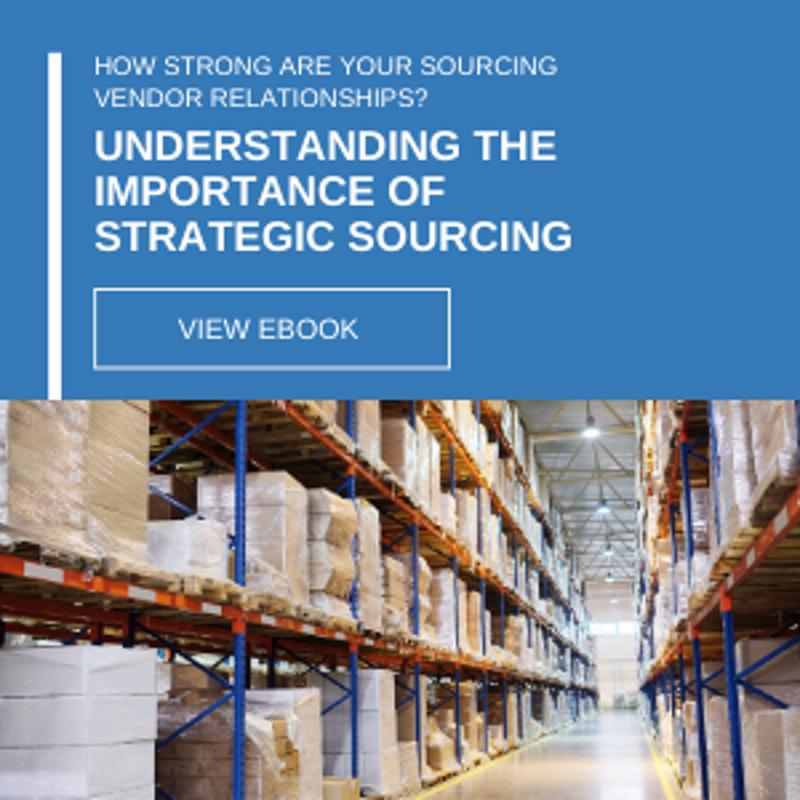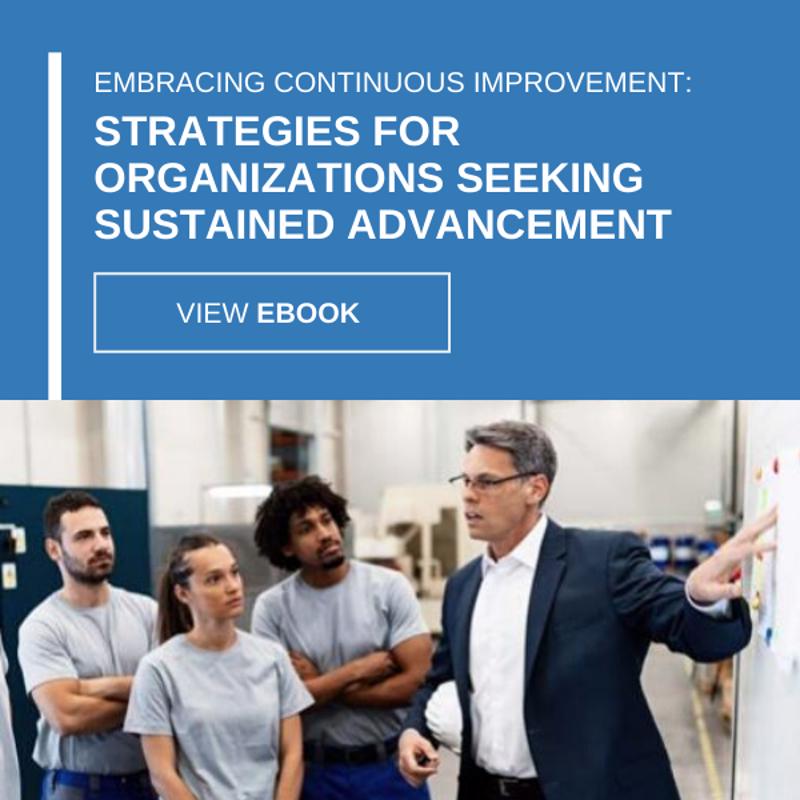-
Subscribe to Blog:
SEARCH THE BLOG
CATEGORIES
- Aerospace
- Asset Maintenance
- Automotive
- Blog
- Building Products
- Case Studies
- Chemical Processing
- Consulting
- Food & Beverage
- Forestry Products
- Hospitals & Healthcare
- Knowledge Transfer
- Lean Manufacturing
- Life Sciences
- Logistics
- Manufacturing
- Material Utilization
- Metals
- Mining
- News
- Office Politics
- Oil & Gas
- Plastics
- Private Equity
- Process Improvement
- Project Management
- Spend Management
- Supply Chain
- Uncategorized
- Utilities
- Whitepapers
BLOG ARCHIVES
- June 2025 (4)
- May 2025 (1)
- April 2025 (1)
- March 2025 (1)
- February 2025 (4)
- January 2025 (4)
- December 2024 (4)
- November 2024 (2)
- October 2024 (6)
- September 2024 (5)
- August 2024 (5)
- July 2024 (6)
- June 2024 (3)
- May 2024 (3)
- April 2024 (4)
- March 2024 (3)
- February 2024 (4)
- January 2024 (5)
- December 2023 (2)
- November 2023 (1)
- October 2023 (6)
- September 2023 (3)
- August 2023 (4)
- July 2023 (2)
- June 2023 (3)
- May 2023 (7)
- April 2023 (3)
- March 2023 (3)
- February 2023 (5)
- January 2023 (6)
- December 2022 (2)
- November 2022 (5)
- October 2022 (5)
- September 2022 (5)
- August 2022 (6)
- July 2022 (3)
- June 2022 (4)
- May 2022 (5)
- April 2022 (3)
- March 2022 (5)
- February 2022 (4)
- January 2022 (7)
- December 2021 (3)
- November 2021 (5)
- October 2021 (3)
- September 2021 (2)
- August 2021 (6)
- July 2021 (2)
- June 2021 (10)
- May 2021 (4)
- April 2021 (5)
- March 2021 (5)
- February 2021 (3)
- January 2021 (4)
- December 2020 (3)
- November 2020 (3)
- October 2020 (3)
- September 2020 (3)
- August 2020 (4)
- July 2020 (3)
- June 2020 (5)
- May 2020 (3)
- April 2020 (3)
- March 2020 (4)
- February 2020 (4)
- January 2020 (4)
- December 2019 (3)
- November 2019 (2)
- October 2019 (4)
- September 2019 (2)
- August 2019 (4)
- July 2019 (3)
- June 2019 (4)
- May 2019 (2)
- April 2019 (4)
- March 2019 (4)
- February 2019 (5)
- January 2019 (5)
- December 2018 (2)
- November 2018 (2)
- October 2018 (5)
- September 2018 (4)
- August 2018 (3)
- July 2018 (2)
- June 2018 (4)
- May 2018 (3)
- April 2018 (3)
- March 2018 (2)
- February 2018 (2)
- January 2018 (1)
- December 2017 (1)
- November 2017 (2)
- October 2017 (2)
- September 2017 (1)
- August 2017 (2)
- July 2017 (2)
- June 2017 (1)
- April 2017 (3)
- March 2017 (3)
- February 2017 (2)
- January 2017 (2)
- December 2016 (2)
- November 2016 (4)
- October 2016 (4)
- September 2016 (3)
- August 2016 (6)
- July 2016 (4)
- June 2016 (4)
- May 2016 (1)
- April 2016 (3)
- March 2016 (4)
- February 2016 (2)
- January 2016 (4)
- December 2015 (3)
- November 2015 (3)
- October 2015 (1)
- September 2015 (1)
- August 2015 (4)
- July 2015 (6)
- June 2015 (4)
- May 2015 (7)
- April 2015 (6)
- March 2015 (6)
- February 2015 (4)
- January 2015 (3)
CONNECT WITH US
Tag Archives: Coronavirus
“Never let a good crisis go to waste.” — Winston Churchill
Churchill said this famous line as World War II neared its end. It’s inspiring for many reasons, chief among them the optimism that comes from looking for a silver lining in the darkest of clouds. The manufacturing industry, and indeed our world, has been engulfed by a different type of dark cloud during the pandemic. Some businesses have closed. Others have had to pivot in response to COVID-19 challenges. The supply chain has been disrupted. Production has slowed. Demand is all over the place. Employees are wondering if their jobs are safe. What would Churchill say now?
At USC Consulting, we’d like to think he would have retained that sense of optimism. Yes, we’ve been through a trial by fire. And it’s not quite over yet. But great opportunities may arise from the ashes. Changes made on the fly in response to COVID might actually lead the manufacturing industry to bounce back stronger, leaner and more efficient than before.
The subject matter experts at USC Consulting Group have analyzed and explored the state of manufacturing operations today in search of a silver lining to our current landscape. From our findings, we have compiled a detailed white paper “The State of Manufacturing Operations: Then, Now and What Comes Next.” In this white paper, we provide an overview of our research as well as identify the challenges and issues manufacturers are facing now. Plus, we shine up our crystal ball to take a look at what might be coming down the pike in the future. No doubt that 2020 was a bumpy ride. But we just might be happy with the destination.
No doubt, 2020 was a trial by fire for the manufacturing industry. But out of that crisis, opportunities for positive change have emerged. Many manufacturing businesses are rethinking everything from their supply chains to employees working at home to business travel. Change is coming to this traditional industry, change for the better.
If your business is ready to adopt to positive change and become more efficient, please contact us today.
We’re all aware of the fact that COVID-19 has changed life as we know it in this country (and the world). Because of this pandemic, there is a new level of complexity in everything we do. Whether it’s having to mask up, sanitize grocery cart handles, and remember not to touch your face before washing your hands just to shop for your family’s dinner, or running your business’s operations safely by instituting new protocols designed to keep your workers healthy, COVID has inserted all sorts of new steps into old processes.
These are necessary evils, at least for now. But no matter if you’re talking about a grocery run or a manufacturing run, all of these new steps, protocols and procedures mean a drop in efficiency. Things just take longer now. For individuals going about their everyday lives, it’s a simple annoyance. But for businesses, it can mean a drain on the bottom line.
Efficiency busters in business
If you’re experiencing a drop in efficiency because of COVID protocols, you’re not alone. Most every business has instituted new procedures designed to keep their people safe and healthy. The unfortunate downside is, they can erode your efficiency. Here are some common efficiency busters brought on by the pandemic.
Temperature checks. Just getting on and off the shop floor now may involve temperature checks and other time-consuming safety protocols. When you’re measuring efficiency in minutes, this time lag when changing shifts can become problematic in a hurry.
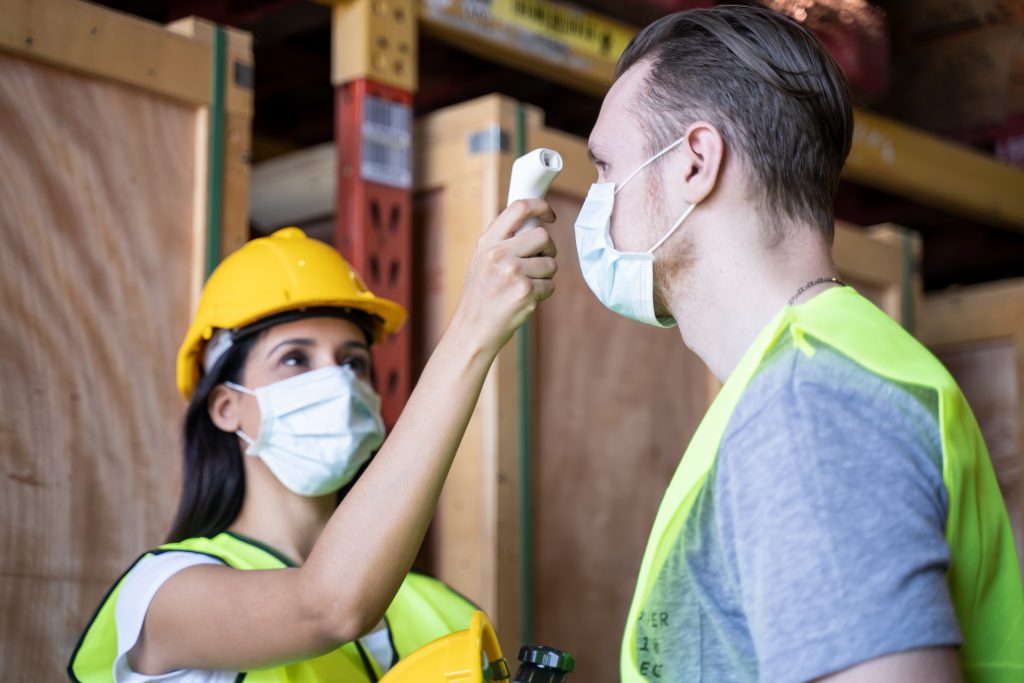
Physical distancing. The COVID distancing guidelines (six feet, per the Centers for Disease Control) have caused manufacturing businesses to alter the configuration of their operations in order to accommodate the need for separation between workers. But that can mean fewer hands on the job.
Employee exposure. If one person on a shift is diagnosed with COVID, everyone who came into close contact with that person should isolate until they are tested or don’t develop symptoms within 14 days, according to CDC guidelines. Losing even a few team members for that amount of time is devastating.
Sanitization. Many businesses need to clean and sanitize workspaces, machinery and other tools of the trade between shifts, now more than ever before.
Supply chain slowdowns. COVID protocols worldwide may result in challenges getting people and materials to your business. Your supply chain may be affected by these same issues, causing a slowdown in getting the raw materials you need to and from your business. According to the Institute for Supply Management, purchasing managers at some of the largest manufacturing companies expressed ongoing unease about future shocks to their supply chain while they scramble to remedy current shortages.
[For more information about supply chain management, read our blog, 4 Best Ways Manufacturers Can Perfect Their Supply Chain]
Everyone’s productivity can be taken down a notch by these new protocols, procedures and delays.
How USCCG can help
By analyzing and implementing new strategies with getting your people on and off the shop floor faster, developing optimized layout plans to allow physical distancing, or improving processes for sanitization or what to do when employees develop symptoms, USC can assist. Most importantly, we can help you find hidden opportunities for efficiency that might mitigate some of that productivity loss. It’s crucial to look at your operations now. Operating like that proverbial well-oiled machine will be the key to you not simply surviving this crisis, but thriving now and in the future.
At USC Consulting Group, we have spent more than 50 years doing just that. We specialize in finding hidden opportunities for increasing process efficiency, allowing you to do more with the assets you already have. It’s about looking at your operations and finding efficiencies you’re not aware of.
If you’re interested in finding out more about how USC Consulting Group works, and what we can do for your business, please get in touch. That call today could lead to a more efficient operation tomorrow.
For more information about our current solutions to today’s operational challenges, read our free eBook, “Times Have Changed. USC Consulting Group Can Help You Adapt.”
COVID-19 has changed every workplace to varying degrees. Some industries, like hospitality, have experienced wholesale change. Others have shifted, quite abruptly, to remote work. Still others, like most of our clients, have undergone operational changes that allow them to get the job done safely. Many have seen productivity and efficiency drop as a result of new, COVID-related protocols and procedures.
Our business has had to make changes because of the pandemic, too. We’ve had to pivot and adapt to new realities, just like our clients have had to do. For us, and we daresay for you as well, it’s about taking a hard look at our operations and making them as efficient and swift — and safe — as possible. It’s necessary to do so in order to not just survive in this new economic landscape, but to thrive.
Necessary changes for this new normal
At USC Consulting Group, we don’t just sell our service. We sell our methodology. It’s what sets us apart. We’ve built more than half a century on a tried-and-true methodology. Our goal is to effect operational change and efficiencies for our clients. It’s what we do, and if we do say so ourselves, we do it well. However, to gain greater operational efficiency in this economic climate, you need it yesterday.
The good news is, we are nimble enough to pivot in response to these changing conditions. We’ve adapted and streamlined our own processes to get you the help you need now. Here’s how we work in a nutshell:
Listen. The first thing we do is sit down and listen to our clients. Even though we’ve been doing this for over a half century, we don’t come in thinking we have all the answers or know what your issues are. We want to understand from your perspective what challenges, bottlenecks and stumbling blocks you are facing.
Experience your operation for ourselves. We are not about sitting in the CEO’s office and coming up with solutions from a distance. We get into your operation and see it with our own eyes. We talk to frontline workers. Do feasibility studies. Importantly, we gain understanding at the point of execution on the frontlines. Our philosophy is, nobody knows the job better than the person who has been doing it every day. We gain invaluable insight from your workers on the shopfloor and use that insight to craft solutions that will work for your unique needs and challenges.
Get to work. We craft a collaborative approach to get after what we all think is there to get — greater efficiency, streamlined processes and the ability to do more with less.
That’s our simple, go-to business model, put into warp drive for the immediacy of today’s economy.
Hidden opportunities
Hidden opportunities can be the whole ball of wax when it comes to increasing your efficiency and allowing you to do more with the assets you already have. We’re talking about ferreting out efficiencies in your operation that you’re not aware of. You may not be seeing the forest for the trees. We come in with fresh eyes and can uncover things you didn’t even know were there. Nine times out of ten, we find hidden opportunities for efficiency by looking at procedures that are generally accepted as “just the way things are.” A few examples:
- Excessive cycle time. Cycle time to produce a part could be reduced by redistributing the work between processes so that more of the activities take place in parallel vs. in series.
- Excessive time for changeovers on a machine. There are activities that could be started and even completed before the changeover starts.
We start the process of finding hidden opportunities by getting the answers to a few questions. Where is the problem? Is it technical or tactical? Is your goal feasible?
If it’s technical, maybe it’s time to bring in the engineers to improve on your machines’ functions. If it’s tactical, we look at your processes, the way you’re using those machines, to find those hidden efficiencies.
We also take a hard look at the feasibility of your goal. Can we reasonably get you there with the assets you have? Sometimes the answer is no. Sometimes we can split the difference and get you close to the goal. Sometimes we can hit and even exceed that goal.
Bottom line: At USCCG, we understand you need triage now, not a lengthy study into your business. So we’ve adapted our business process to get you the help you need more quickly. We will hit the ground running so you can meet your customers’ needs.
If you’re interested in finding out more about how USC Consulting Group works, and what we can do for your business, please get in touch. That call today could lead to a more efficient operation tomorrow.
For more information, read our free eBook, “Times Have Changed. USC Consulting Group Can Help You Adapt.”
COVID-19 has been a take-no-prisoners virus. In mere months, thousands of businesses have folded in a variety of industries or are on the verge of closing. Some sectors have proven to be more resilient than others though. For instance, while a number of economists anticipated real estate would likely be hard-hit, the combination of solid economic fundamentals as well as record-low interest rates have kept the industry humming. Indeed, the Pending Home Sales Index reached nearly 9% in August and the existing-home sales topped a seasonally adjusted annual rate of 6 million during the same period, according to the latest estimates from the National Association of Realtors. Engaged buyers and highly limited inventory have kept builders hard at work nationwide.
Despite the residential housing sector’s strength, 2020 will likely be remembered as a down year for developers.
When 2020 officially concludes, the construction industry in the U.S. is anticipated to be 6.5% smaller than it was when the year began. That’s according to a recent report from ResearchandMarkets.com. If conditions continue at their present pace, the sector is poised to contract an additional 2% come 2021.
Coronavirus disruption in construction
The coronavirus is largely responsible. With over 7 million Americans infected by the strain and a variety of social distancing measures installed by states as well as employers, numerous projects that were slated to take place have been delayed, rescheduled, or started but with far fewer workers than initially anticipated. In some instances, this has been due to laborers who were sick; in others, developers were limited to having only so many people on job sites at once.
“In September, wood used for framing reached $950 per thousand board feet.”
Complicating matters further is the price of home-building materials, especially lumber. Forestry and logging companies have encountered their own struggles with the exploration and extraction of trees due to COVID. This, in turn, has led to higher purchase prices for developers. For example, in September, wood used for framing reached $950 per thousand board feet, according to the National Association of Builders. Tracing back to April, lumber prices in the U.S. are up 120%, on average. As a result of this, the cost of buying for would-be homeowners has risen roughly $16,000, NAHB estimates, stretching the finances of many budget-minded families too thinly.
What can building product manufacturers do to bounce back in 2021? Here are a few suggestions:
Embrace the new business as usual
Perhaps the biggest frustration of the COVID-19 crisis is the uncertainty of it all, as no one seems to know when advanced safety measures to slow the spread will end. While most parts of the country now allow laborers to be on the job — whereas before they were off-limits — roughly three-quarters of building product manufacturers believe COVID-19 restrictions will continue for another year, according to polling done by Construction Dive. More specifically, 88% expect social distancing and personal protective gear will be the norm for the long term.
As a result of this, businesses should try to acclimate themselves to the reality of having fewer hands. Whether it’s done by leveraging automation technology to tackle repeatable processes, or streamlining production through smarter asset utilization, building product manufacturers will need to ramp up their process efficiencies so workers can execute more effectively.
Prepare and source even further in advance
In addition to lumber being more expensive to purchase, it’s also harder to come by. As Newsweek reported earlier this summer, COVID-19 restrictions forced numerous lumber mills across the U.S. to cut back on their production, both for softwood lumber and treated lumber.
When the time comes to obtain material for a scheduled project, manufacturers may want to stock up. This is something that Jeffrey Luter of Fulcrum Associates has done and plans on continuing. Speaking to New Hampshire Business Review, Luter noted his company has extended its purchasing window rather considerably.
“Items that we would source three to four weeks before they are needed on the job site are being ordered 10-12 weeks in advance,” Luter explained.
Adopting a more forward-looking strategy can enable building product manufacturers to better prepare for fluctuations in the supply chain, which are forecast to continue in 2021.

Building product manufacturers look to keep employees safe and well.
Keep crew safe and well
With many building product manufacturers operating with skeleton crews, the ongoing productivity of each individual becomes that much more important. However, with construction routinely being among the top industries for on-the-job industries, developers must prioritize the protection of all involved. This includes keeping laborers protected from infection. Tom Sullivan of Sullivan Construction told NHBR this has been an ongoing process throughout the pandemic.
“We take the temperature every day of everybody who comes on-site,” Sullivan said. “We apply social distancing to our projects. We have a mask requirement for all people on our job sites — including people from our group and myself. We want to make sure nobody gets sick. Our objective is to keep everybody healthy and use the latest and greatest protocols out there to protect everyone.”
Prioritize supply chain management
In addition to fully operational work crews, builders also require the materials to build. But as previously noted, key materials and equipment to development are either in short supply, virtually impossible to find or expensive to purchase. As a result, building products manufacturers should aim to optimize their supply chains as proactively as they can. This includes diversifying where they get their materials from so firms have more options and places to go when suppliers are out of stock. Strategic sourcing can help in this regard.
Building product manufacturers may also want to perform their own research to see where it’s possible to use one material in place of another. Former NAHB Chairman Randy Noel said certain alternative materials — such as steel — may serve as a sufficient option as a substitute for lumber. As the Steel Market Development Institute points out, steel may prove more cost-effective than wood framing because it won’t warp, split, crack or rot like wood does.
From strategic sourcing to efficiency improvements or cycle time reduction, USC Consulting Group has the solutions that can help your business find it’s footing in the building products landscape — in more ways than one. Contact us today to learn how we can help you be more efficient in your operations.
There are a host of different philosophies that business owners adopt to effectively manage their organizations. One of the most successful and widely utilized in the manufacturing sector is just-in-time inventory. Although not exclusive to manufacturers, lean manufacturing — as it’s more commonly known — is designed to improve process efficiencies by minimizing waste and maximizing output, producing just enough volume to sell quickly.
However, as the supply chain challenges of the coronavirus crisis continue to play out, with certain household products like paper towels, baking ingredients, and cleaning supplies still difficult to find, some are questioning the wisdom of this management philosophy. During the height of the pandemic amid “panic buying,” shortages dragged on for weeks at a time all across the country. Since manufacturers kept their own supply levels low and couldn’t ramp up production due to social distancing measures, stockers could barely keep up with the pace of demand. Shoppers snatched up household staples just as soon as they could find them.
Steve Cahillane, CEO for the breakfast cereal giant Kellogg’s, told The Wall Street Journal the company is considering amending its just-in-time inventory approach.
“There is appetite for more safety stock going forward,” Cahillane explained. “That is something that everybody is talking about.”
Some experts have concluded that lean manufacturing principles don’t work well within an environment with demand uncertainty. Contrary to what the critics say, this strategy remains a relevant and effective production principle during these times. Here are five unwavering reasons as to why:
1. Lean manufacturing principles are more than “just-in-time”
Lean manufacturing as a concept has been around for a while now, born in the 1930s and adopted by the automotive titan Toyota. Ninety years in the making, the thrust of lean manufacturing remains the same, but due to some nuanced understandings of lean, some organizations seem to have misconstrued what the term actually means. As noted by Industry Week, lean manufacturing isn’t just about inventory, but rather maximizing customer value while minimizing waste. Citing the definition that Lean Enterprise Institute uses, the publication noted that lean manufacturing is all about changing “the focus of management from optimizing separate technologies, assets, and vertical departments to optimizing the flow of products and services through entire value streams.”
“Lean manufacturing is about maximizing customer value while minimizing waste.”
Wally Hopp of the University of Michigan Ross School of Business goes further. He told The Wall Street Journal that lean inventory originally urged adopters to have backup plans in place to guard against circumstances preventing businesses from producing as they do normally.
“In a lot of the lean literature, that’s just stripped out,” Hopp said.

2. Lean can enhance flexibility
Another way in which lean manufacturing principles have been misconstrued is from a standpoint of flexibility. When implemented properly, through strategies like lot size reduction, level scheduling, and employee cross training, lean manufacturing is designed to help companies improve their process efficiencies. Theodore Duclos, chief operating officer for Freudenberg Sealing Technologies, told IndustryWeek that these same principles can also be applied to mission-critical equipment so these resources designed to enhance output can do more than one thing. In other words, instead of equipment being devoted to one specific task, optimizing equipment to handle multiple tasks helps to pick up the slack as a result of supply chain disruptions. It’s likely that product shortages stemmed from one dimensional equipment, thereby preventing some businesses from improvising.
3. Lean increases engagement among employees
A fundamental component of improving output in any business is engagement, which many businesses and decision makers say their company is lacking. Worldwide, it’s estimated that over two-thirds of workforces are not engaged, according to polling done by Gallup. Additionally this lack of engagement winds up costing business owners roughly 18% of their annual salary.
The very meaning of lean from a standpoint of running a business enables workers to have more say in terms of decision-making as they become stakeholders, noted IndustryWeek contributor Eli Boufis, co-founder and executive principal for Driehaus Private Equity. An engaged employee culture helps staff change their perspective by viewing problems not as stumbling blocks but as opportunities for improvement.
4. Lean improves responses to behaviors of customers
Similar to the misunderstanding of what lean means, there is also a misconception of the root cause of the ongoing shortages. There’s reason to believe it was more the multiplier effect than anything else. Perhaps the best example was what occurred with toilet paper. When news organizations reported that store shelves were increasingly bare with this staple product, many consumers responded by purchasing more rolls than they would normally, fearful that they would run out come the time they needed it. This thinking process resulted in a chain reaction in which everyone was thinking the same thing. In short, perception drove the shortage, which ultimately became a reality.
In the book “Lean Thinking” by James Womack and Daniel Jones, the co-authors write that lean as a concept and approach serves as “a way to do more with less human effort, less equipment, less time and less space — while coming closer and closer to providing customers exactly what they want.”
In short, lean practices aren’t part of the problem, but part of the solution as this approach is designed to help producers adapt and respond to changing customer demands as they occur.
5. Lean is widely adopted by industry leaders
Lean manufacturing principles are not just some idea or concept that works for some organizations and not for others. In many ways, it’s a way of life and highly prioritized. According to a joint report issued by Kronos and IndustryWeek titled “The Future of Manufacturing: 2020 and Beyond,” when business owner respondents were asked about their priorities moving forward, “lean manufacturing systems” was the second-most common response, behind only quality management systems.
Some of the most successful companies in the world have adopted lean manufacturing practices, including:
- Caterpillar
- John Deere
- Walmart
- Kimberley-Clark Corporation
- Intel
- Ford
- Toyota
- Georgia-Pacific
COVID-19 and the adverse effects on the economy that resulted are real, but lean manufacturing can be a solution. USC Consulting Group can help you implement this strategy in a way that works best for your organization. Contact us today to learn more about how to get more out of your business with less.
Fresh or frozen? When it comes to choosing between the two types of food, fresh has held the distinct advantage, uniformly advocated by both health professionals and dietitians.
Yet, given the latter’s success and prosperity before, during, and in the thick of the coronavirus crisis, you would think frozen has had the advantage all along, as manufacturers have not just survived the surge in demand among emergency preparedness-minded consumers, but thrived.
Even prior to COVID-19, frozen food manufacturers of all sizes were in growth mode, quietly gaining significant market share in the food industry as a whole. Indeed, according to the American Frozen Food Institute’s (AFFI) 2019 “Power of Frozen” report, manufacturers have seen sales reach approximately $57 billion on an annual basis over the last few years, Progressive Grocer reported. Some of the industry’s largest movers and shakers — meaning the types of products consumers purchased the most — include ready-to-bake pizza, flash-frozen vegetables, seafood, prepared potatoes, and assorted desserts.
Many food and beverage companies experienced a boost in sales when lockdown orders went into effect across the country, and the frozen food suppliers were no exception. Sales for frozen foods soared 80% during the week of March 15 compared to 12 months earlier, AFFI found in a separate report from this year. The surge in buying activity was even more substantial the following week, up 94% on a year-over-year basis.
Many food and beverage companies experienced a boost in sales when lockdown orders went into effect across the country, and the frozen food suppliers were no exception.
Coronavirus causes conflict for Conagra
One of the nation’s largest frozen food suppliers, Conagra Brands, encountered some production and supply chain disruption issues early on. As Food Business News reported at the time, nearly two dozen workers at one of its Missouri factories contracted COVID-19, which forced the closure of the plant for 10 days, from April 17 to 27.
Putting frozen food production activity on ice temporarily was done out of an abundance of caution, said Conagra spokesperson Daniel Hare.
“The health and safety of our employees is our top priority,” Hare said, according to the website. “In our Marshall facility, we have been using social distancing techniques, screening temperatures and increased sanitization in the facility to prevent the spread of COVID-19.”
Conagra was ultimately able to right the ship and optimize its supply chain through cycle time reduction, productivity improvements and strategic asset utilization. In fact, an uptick in sales, presumably as a result of these efficiency improvements, allowed Conagra to distribute $7 million in cash bonuses to eligible employees, the company said in a press release issued in May.
Innovating and adapting to consumer dietary preferences
Another way the frozen food industry has been able to endure and overcome the hurdles caused by COVID-19 is through better communication with consumers and adapting their product offerings to fit their needs and dietary desires. A classic example is plant-based foods. From frozen pizzas made from cauliflower to Portobello mushroom burger patties, plant-based foods are all the rage these days, as they’re high in fiber and full of vitamins and minerals. As a result, frozen food manufacturers and suppliers have invested in innovative technologies that ensure these foods are handled, prepared, and chilled in the proper manner to lengthen their shelf-life and preserve their nutritional value. This is done by “flash freezing,” in which foods are frozen quickly by leveraging cryogenics.
Darren Seifer, food and beverage industry analyst at The NPD Group, told Progressive Grocer that household name companies like Conagra, Dr. Praeger’s, and Nestle are all offering more plant-based frozen food entrees — and they’re being received by the public quite well thus far.
“New product innovations in plant-based proteins and vegetables are breaking through,” Seifer explained.
These also include an alternative form of flash freezing by using nitrogen. Nitrogen flash freezing leverages the most abundant chemical on the earth so entrees, snacks, vegetables, and other commonly frozen items chill faster and more efficiently.
This is another example of smart asset utilization. Manufacturers must always be looking to see what equipment they currently have in place to produce the goods that their customers want. If they don’t have it, they must actively assess the quality improvements or investments are necessary to reach a better or more desired outcome.

Frozen foods fighting rumor with facts
With infections from COVID-19 still an ongoing problem and concern, there’s speculation the virus may be spreading through the food supply chain. Some have called into question whether this includes frozen foods transmitting COVID-19.
However, the American Frozen Food Institute has been able to nip these rumors in the bud by enlisting the help of disease experts. AFFI reached out to researchers from North Carolina State University to review all the scientific literature related to COVID-19 and what conclusions, if any, suggest SARS-CoV-2 is communicable through food or beverages.
Sanjay Gummalla, senior vice president of scientific affairs at AFFI, said there are no studies that make such a causal link.
“There is just no scientific evidence in the currently available literature to support that SARS-CoV-2 can be spread by foodborne routes,” Gummalla confirmed.
Dr. Lee-Ann Jaykus, a NC State professor in the Department of Food, Bioprocessing and Nutrition, further noted the only known pathway of external contamination is if food were to come into direct contact with a surface that’s been contaminated or physically handled by someone who was infected or presented symptoms. But even here, there would need to be a perfect storm of conditions for transmission to occur. In other words, while it is technically possible, it’s highly unlikely.
Since there have been no known or reported cases of coronavirus spreading through food — frozen or otherwise — it’s confirmation suppliers and manufacturers have put the proper production measures into effect to reduce the chances of cross-contamination through more rigorous cleanliness, product testing, and disinfecting, all of which may be associated with efficiency improvements and supply chain optimization.
If you’re a food manufacturer who is looking to enhance output or refine processes, USC Consulting Group can help you churn out more product without compromising quality. We’ve helped numerous companies over the years enhance their competition position; we’re confident we can do the same for you. Contact us today.
It is difficult to put into exact figures the effects the coronavirus pandemic has had on global industry. However, with manufacturers and supply chains across the world reeling with the ongoing problems the pandemic has presented, we are seeing a definite shift in the ways business is conducted.
Overall, factory shutdown and manufacturing delays have shrunk foreign direct investment by 5-15%, as global trade and supply is interrupted. But some businesses and industries—like toilet tissue, hand soaps and sanitizers, and face mask manufacturers—are experiencing a heavy increase in demand.
So how are these businesses coping with potential delays or limited access to materials? What does this global shift mean for manufacturers and supply chain managers of products that are especially high in demand?
Manufacturing
Manufacturers in high demand during the pandemic must devise unique solutions to meet customer satisfaction while protecting employees. While these solutions are different for every industry, how paper products and food services are adjusting are a good indicator of common trends.
Paper companies have seen a 20% increase in orders during the pandemic, with worried individuals stocking up on products like toilet tissue for fear of being stuck inside without it. Additionally, the increased number of individuals either unemployed or working from home means more business for household toiletry and paper products. This means factories already operating on a 24/7 basis have had to increase production, hire on more workers, and buy out more materials, all while maintaining COVID safety recommendations.
Without maintaining employee safety, factories put themselves at risk of shutting down. This is especially vital in the foodservice industry, where workers have to constantly manage risks with shifting inventories.
Food and beverage companies are reevaluating their processes to maintain supply amidst high demand and limited access to materials. Coca-Cola, for instance, has experienced interruptions in shipments of certain sugar alternatives because of the pandemic. Usually, they acquired many of these materials from China, but the difficulties in trade amidst economic shutdowns and transportation complications have made international supply chains difficult to manage.

Photo by Olenka Sergienko from Pexels
As a result, manufacturers are shifting to domestic sources. According to a recent survey, 64% of manufacturers believe reshoring is likely, meaning a return to domestic sources of materials and assemblage. This domestic trend can help manage manufacturers and supply chain needs for high-demand products, but the effect on foreign economies will be felt for a long time to come.
Supply Chain Management
Supply chains require vast amounts of data, mapping, and planning for successful, seamless functioning. In light of the pandemic, those that already had a sufficient map of supplier sites had a better understanding of where delays could be anticipated. But data is key here, and it has been the focus of a shift for manufacturers both experiencing increased demand and those that have not.
Supply chains are essential to the transportation and costs of goods, both for manufacturer and consumer. Every aspect of customer satisfaction and good business relies on an effective supply chain, and the coronavirus has impeded supply chains worldwide.
Because of this, industries with high demand are more reliant than ever on the effective mapping of suppliers and the use of data. They need constant, reliable resources to meet demand, and only the best information can assist in this endeavor.
This often means a digital mapping system on top of a “nomadic sourcing” strategy for the long term. Businesses have to adjust their suppliers depending on where they can effectively acquire materials. For example, if a recent outbreak has shut down a factory that makes a specific part needed for another manufacturer’s product, a back-up location must be mapped out and ties created.
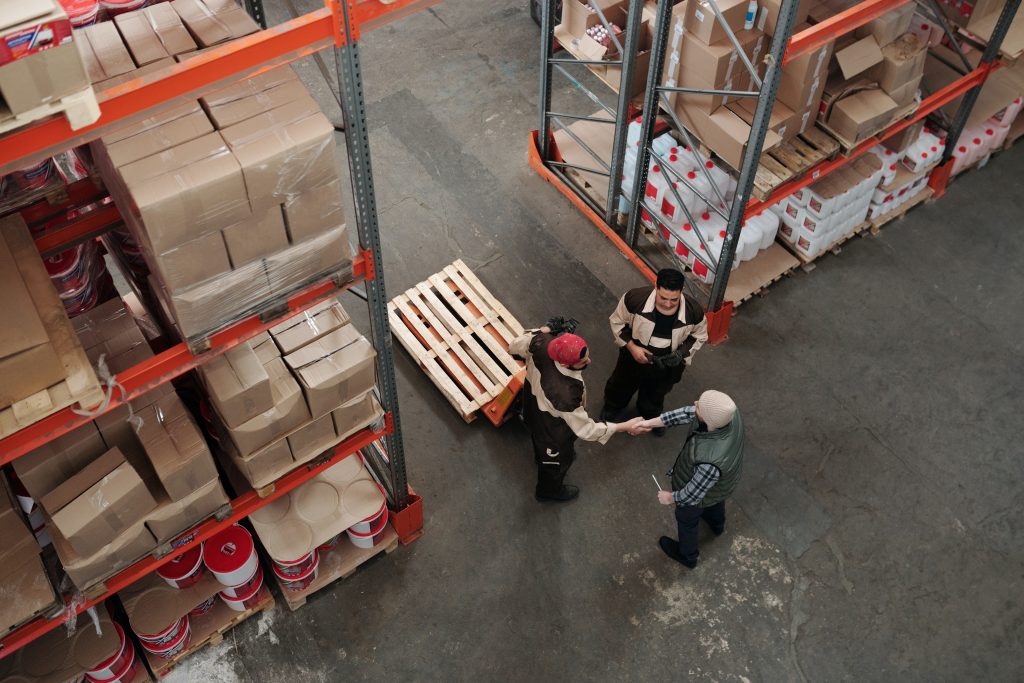
Some businesses are adopting these strategies and back-ups now, amid the pandemic, while others were already more prepared with such strategies. Regardless, the emphasis on information and digital tools is creating a shift in the world of supply chain management, where big data and AI tech is increasingly being adopted.
As a result of this shift, the concerns of cyber-attacks are more prevalent than ever. In the digital world made necessary by COVID-19, cybersecurity is a vital element of supply chain management, especially for those providing products in high demand. Data can be highly valuable for hackers and the current 4 million-person shortage in the field of cybersecurity, according to the University of North Dakota, makes for a dangerous landscape for supply chains.
As the industry shifts, digital mapping, nomadic sourcing, and cybersecurity are all central focuses for supply chains managing high-demand products.
A Changing World Amidst the Pandemic
Manufacturers and supply chain managers are having to adjust on the fly to the challenges of a global pandemic, and that means shifting policies and procedures. From integrating safety and social distancing measures to protecting employees to ramping up production and domestic sourcing, modern business is adjusting to high-demand and plotting supply chains with advanced digital all in a challenging environment.
These trends will likely continue for years to come, with the reverberations felt across a wide variety of industries. In manufacturing and shipping, these changes may make for increased awareness and control over materials and supply chains, but only time will tell what the full effects of the pandemic will be on global trade at large.
This article is written by guest author Beau Peters. View more of Beau’s articles here.
There are many phrases that come to mind when one thinks of the coronavirus pandemic: terms like “social distancing,” “new normal,” and “flatten the curve” are just a small handful.
Yet for business leaders – especially manufacturers and shippers – the words “unpredictability” and “uncertainty” will likely epitomize 2020, as they’re something organizations continue to experience as the country and consumers emerge from the nationwide lockdown amid supply chain disruption.
“A majority said [the biggest pain point] was the unpredictability of consumer demand.”
In a recent survey conducted jointly by CalAmp and Reuters Events, industry respondents were asked to name the biggest pain point they experienced as it pertained to their supply chains. Of the nearly 800 individuals that took part in the poll – a combination of shippers and supply chain execs – the majority said it was the unpredictability of consumer demand. More specifically, 51% considered it the most significant supply chain disruption, more so than the inbound flow of goods from suppliers (33%) and difficulties with getting shipment to paying customers (16%).
The white paper, which was released as a supplement to the survey, noted that the pandemic proved to be unusual in many ways, but most especially in terms of the fluctuations in what consumers wanted and to what degree.
“The pandemic has introduced unexpected volatility into customer demand, making it even more difficult to discern demand patterns,” the report stated, as quoted by Supply Chain Dive. “Furthermore, silos between sales and operations has hindered data-sharing, which would have proven useful in navigating these issues.”
Manufacturers experience supply chain disruption
April proved to be a particularly harsh stretch for manufacturers, a month many would point to as the height of the crisis. On a seasonally adjusted basis, the combined value of trade sales and manufacturers’ shipments totaled approximately $1.2 trillion, according to estimates from the U.S. Census Bureau. That represented a drop of over 14% compared to March and more than 18% on a year-over-year basis.
Jon Gold, vice president for supply chain and customs policy at the National Retail Federation, told Supply Chain Dive the dramatic drop off in business activity had everything to do with coronavirus.
Owning a business by its very nature is often fraught with uncertainty. But in an era of big data and analytics, more organizations are turning to automation to get a read on what consumers want so they can make more informed decisions about inventory and production. However, as University of Arkansas’ John Aloysius told Supply Chain Dive, the machine learning algorithms used for forecasting are guided by what consumers have done historically. Since COVID-19 was unprecedented in the Information Age, predictive analytics had nothing to draw from for guidance.
“These models suddenly become much less useful because the variability in demand that you’re going to see, it’s no longer systematic,” Aloysius added, who is a professor in the supply chain management department at the University of Arkansas. “It’s not just say, an increasing trend; it’s not just fairly predictable seasonal lifts. Everything’s just like a completely different story and the historic data is no longer as relevant.”
Bounce back better than expected
Given the amount of people who lost their jobs and filed for unemployment due to the shutdown – well over 40 million – the Institute for Supply Chain Management released a report in mid-May forecasting that the sector would almost certainly contract in 2020, perhaps by as much as 10% in terms of revenue, with capital expenditures declining more than 19%. Yet in what came as a surprise to just about everyone in manufacturing, ISM’s monthly Purchasing Managers Index for June reached 52.6%, up nearly 10 percentage points compared to May. The PMI is a numerical representation that points to the prevailing direction of economic health, with any reading above 50% suggesting conditions are positive.
While manufacturing officials did anticipate an improvement in productivity and performance with shutdowns largely lifted, the degree of growth came as a surprise for many. This also speaks to the unpredictability of consumer demand at any given time and how the supply chain responds.
Because business owners have been unable to get a read on consumer behavior, several major organizations have either adjusted their sales forecasts or done a 100% about-face.
For example, in an earnings call in May, Target CEO Brian Cornell said the following:
“Our ability to project how that [i.e. markdown plans] is going to play out over the balance of the quarter or year is unfortunately something that we can’t do today,” Cornell explained, according to Seeking Alpha. “I think there’s just too much uncertainty, too many variables.”
In its own earnings call, Walmart Chief Financial Officer Brett Biggs had similar misgivings regarding sales performance.
“The uncertainty stems from some variables that could impact performance in either direction,” Biggs warned.

Manufacturers also have to contend with employees, many of whom may be reluctant to return to work over concerns about contracting the virus, which so far has infected over 3.8 million people in the United States alone, according to the Kaiser Family Foundation. Between June 26 and July 3, new cases totaled 326,599.
Certain manufacturers that never closed – deemed “essential businesses” – allayed fears by being proactive about how to flatten the curve. NeuroLogica, a medical manufacturing company in Danvers, Massachusetts, that specializes in portable CT scanners for hospitals, went about this by reducing their work crews, maintaining physical distancing, and handing out face masks to personnel, among other measures.
“We provided everyone with a reusable thermometer that they can put on their head to check their temperature before they come to work in the morning,” NeuroLogica CEO David Webster told NBC Boston. “And we’ve installed thermal guns at the entrance so when they walk in, it gives a heat signature. If it looks like they are too hot, we can sort of turn them around.”
It’s impossible to predict the future, but there are things you can do as a business to adjust for worst-case scenarios so that down periods and supply chain disruption can be mitigated. USC Consulting Group can help you improve sales effectiveness and performance by giving you the tools, resources and efficiency solutions you need to succeed when adversity strikes. Contact us today to learn how we can be of service to you.
The steady, daily drumbeat of negative news in March and April was hard to ignore. From rising unemployment rates to businesses large and small struggling to stay afloat and entire industries in virtual standstill due to social distancing measures and shutdown restrictions, most reported news was pretty bleak.
As more states look to revitalize their economies, some much needed signs of encouragement have taken root. Defying expectations, 2.5 million jobs were added to the economy in May, according to the Department of Labor. The jobless rate nationwide lowered over a full percentage point from 14.4% in April to 13.3% in May. Retail sales increased by almost 18% overall compared to April – and a whopping 188% among clothing stores, Yahoo.com reported. Consumer confidence is back on the mend as well.
After a difficult stretch, these positive developments have been a sight for sore eyes. But even when coronavirus infections were at their peak, many companies and industries were able to make some strategic adjustments, which enabled them to come out on the other side as strong as they were before. In some cases, even stronger.
Business booms for Peloton
If there was one thing that more people did a lot more of during the lockdown than they did before, it was home-based workouts. This was largely due to the fact that so many health clubs and gyms were closed due to the high-touch nature of the activities that take place in fitness centers.
One of the manufacturers that was able to take advantage of this change in people’s workout habits was Peloton. Launched in 2012, Peloton specializes in stationary bikes featuring a sleek design and easy-to-use interface in the touchscreen.
The New York City-based firm sold millions of said bicycles in the first quarter. As reported by The Mercury News, revenue surged 66% for Peloton compared to the same three-month period in 2019 and membership for its app rose by 30%. In addition to bikes, Peloton sold many other types of work-from-home exercise equipment, including treadmills, and its Mirror home workout system.

As is frequently the case when demand outstrips supply, Peloton was unable to ship orders to customers in as timely a manner as they do normally. However, by adjusting consumer expectations and through strategic asset management, they were still able to fulfill orders without too much inconvenience for buyers. In fact, the company chose to take a hit on profit margins in order to expedite shipping. The fact that the company continues to produce bikes at an elevated clip – given the fact that they remain very much in demand, even with gyms now starting to reopen – is a testament to the company’s ability to adjust and come through on customer satisfaction.
“The shelter in place and work from home realities … created a meaningful tailwind for Peloton,” John Foley, chief executive at Peloton, told the Financial Times. Between late March and early May, over 1.1 million people downloaded the Peloton Digital app, Foley added.
Although Peloton also offers classes through its digital app that do not require significant equipment beyond dumbbells and a bench, the high number of downloads speaks to the sheer volume of people who purchased the products and accessories that the manufacturer brought to market in a fairly short period of time.
Sales surge for disinfectant suppliers and manufacturers
Given the highly contagious nature of COVID-19 – which can be spread on surfaces as well as in the air, health experts say – cleaning supplies were and remain hot-ticket items. While blue chip stocks experienced massive declines on Wall Street, shares for companies like Clorox soared, rising 17% to $22.7 billion at one point, according to Slashgear.
Reckitt Benckiser, the maker of household cleaning products like Dettol and Lysol, also saw significant growth. As quickly as spray bottles and canisters were boxed, shipped and delivered, they were snatched up by buyers. The surge in demand ultimately led to temporary shortages for grocers, drug stores and big box retailers.
“Out-of-stock” signs would have remained in place for much longer had the U.K.-based consumer goods company not adapted and shored up its workforce.
Speaking to the South China Morning Post, Reckitt Benckiser Chief Executive Officer Laxman Narasimhan said this required refining its processes so its main factories could operate at maximum capacity. This often meant increasing the number of shifts from what used to be one or two to three.
“We have increased production in many parts of the world,” Narasimhan told the paper in April. “We’re simplifying what we do to get the most out of our factories, so that products that are needed right now can be made available.”
Digital transformation on front burner
While strong sales, increased demand and leaner processes are always encouraging, the companies that experienced it likely wish it were under different circumstances. Some fear that there could be a second wave of coronavirus cases, which raises the potential of another lockdown.
Understanding this possibility, more manufacturers and suppliers are applying lessons they learned from the past few months so they can better respond and adapt if history repeats itself. Chief among those actions is focusing more on digital transformation.

“COVID-19 is vastly accelerating digital transformation,” said Mary Long, director of the Supply Chain Forum at the University of Tennessee Knoxville, in an interview with Supply Chain Dive. “We just took a huge leap forward. Companies that have always taken the safe, always-as-it-was approach are suddenly looking at anything that takes touches out of the system.”
These include initiatives such as robotics, analytics, big data, internet of things and enterprise resource management software.
Some companies may think they have to work harder to compete better for those that didn’t fare as well during the lockdown. That’s not necessarily the case. USC Consulting Group can help you work smarter so your company becomes stronger and more resilient in the face of adversity. Contact us today to learn more about who we are and what we do.

